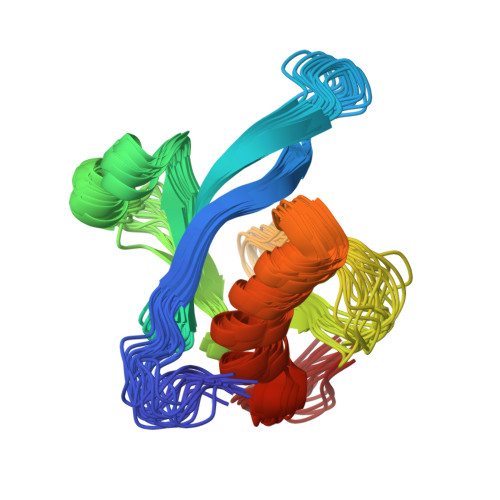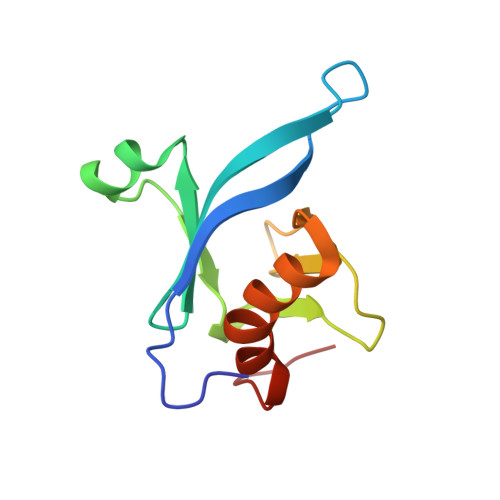Structural basis of wedging the Golgi membrane by FAPP pleckstrin homology domains.
Lenoir, M., Coskun, U., Grzybek, M., Cao, X., Buschhorn, S.B., James, J., Simons, K., Overduin, M.(2010) EMBO Rep 11: 279-284
- PubMed: 20300118
- DOI: https://doi.org/10.1038/embor.2010.28
- Primary Citation of Related Structures:
2KCJ - PubMed Abstract:
The mechanisms underlying Golgi targeting and vesiculation are unknown, although the responsible phosphatidylinositol 4-phosphate (PtdIns(4)P) ligand and four-phosphate-adaptor protein (FAPP) modules have been defined. The micelle-bound structure of the FAPP1 pleckstrin homology domain reveals how its prominent wedge independently tubulates Golgi membranes by leaflet penetration. Mutations compromising the exposed hydrophobicity of full-length FAPP2 abolish lipid monolayer binding and compression. The trafficking process begins with an electrostatic approach, phosphoinositide sampling and perpendicular penetration. Extensive protein contacts with PtdIns(4)P and neighbouring phospholipids reshape the bilayer and initiate tubulation through a conserved wedge with features shared by diverse protein modules.
Organizational Affiliation:
School of Cancer Sciences, University of Birmingham, Henry Wellcome Building for Biomolecular NMR Spectroscopy, Vincent Drive, Edgbaston, Birmingham B15 2TT, UK.
















